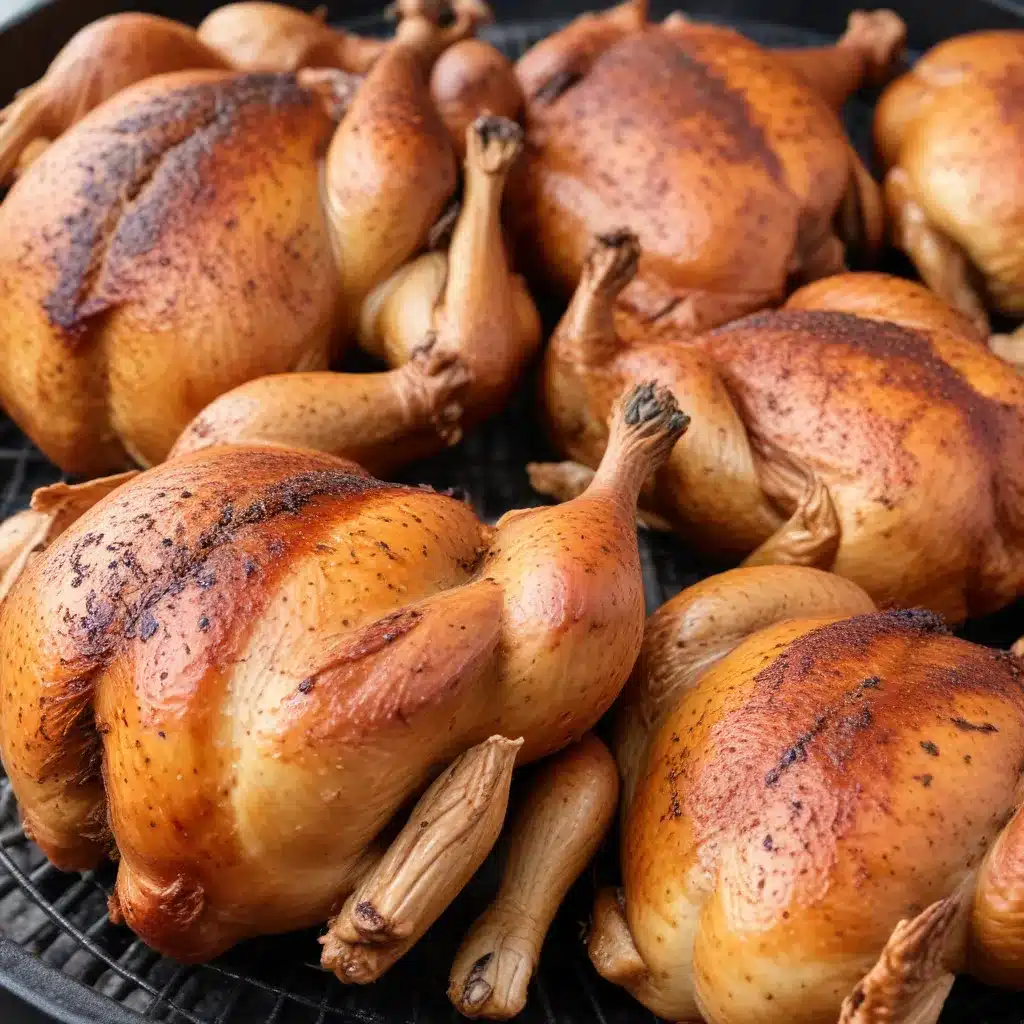
Mastering the Art of Smoked Chicken: Unlocking the Secrets of Juicy, Tender, and Flavorful Perfection
As an experienced barbecue pitmaster at Creekside BBQ, I’ve dedicated countless hours perfecting the art of smoked chicken. It’s a labor of love that has taken me on a journey of experimentation, trial and error, and a deep dive into the nuances of this beloved protein. From selecting the right cut and brining techniques to optimizing my smoker setup and monitoring the cook, I’m excited to share the insider secrets that will help you achieve smoked chicken nirvana.
Understanding the Fundamentals of Smoked Chicken
The key to mouthwatering smoked chicken lies in mastering the balance between temperature, time, and technique. Unlike grilling, where the goal is a quick sear, smoking requires patience and a keen eye for detail. The low and slow approach allows the flavors to meld, the connective tissues to break down, and the meat to become fall-off-the-bone tender.
One of the first decisions you’ll make is the cut of chicken you’ll be smoking. While whole chickens and bone-in breasts are the classic choices, I’ve found that bone-in, skin-on thighs and drumsticks offer an unbeatable combination of juiciness and flavor. The dark meat can withstand the longer cooking time without drying out, and the skin crisps up to a delectable golden brown.
Brining for Flavor and Moisture
Brining is an essential step that sets the stage for exceptional smoked chicken. By submerging the chicken in a salt-sugar solution, you’re not only seasoning the meat but also locking in moisture. This simple step ensures your chicken stays juicy and tender, even when exposed to the intense heat of the smoker.
My go-to brine is a simple mixture of water, salt, and brown sugar. I like to add a few aromatics like garlic, herbs, and citrus to infuse the chicken with an extra layer of flavor. The longer you brine, the more pronounced the seasoning will be, but I find that 4-6 hours is the sweet spot for most cuts of chicken.
Choosing the Right Smoker Setup
When it comes to equipment, the type of smoker you use can have a significant impact on your final product. I’m a firm believer in the versatility of the pellet grill, as it allows for precise temperature control and consistent smoke delivery. The automatic feed system ensures a steady supply of smoke throughout the cooking process, resulting in a deep, penetrating flavor.
That said, I’ve also had great success with traditional offset smokers and charcoal grills. The key is to maintain a stable temperature, typically between 225°F and 275°F, and to replenish the wood chips or chunks as needed to keep the smoke flowing.
Seasoning and Flavoring Your Smoked Chicken
The beauty of smoked chicken lies in its ability to be a canvas for endless flavor combinations. I like to start with a simple dry rub, focusing on a blend of classic spices like paprika, garlic powder, onion powder, and a touch of brown sugar. This provides a solid foundation that allows the natural flavors of the chicken to shine.
But the real magic happens when you start experimenting with different wood chips or chunks. Hickory and oak are the go-to choices, imparting a robust, smoky character. For a more subtle flavor, I’ve had great success with fruitwood like apple or cherry. The key is to find the right balance that complements the chicken without overpowering it.
Monitoring the Cook and Avoiding Common Pitfalls
Patience is a virtue when it comes to smoked chicken. Resist the urge to constantly lift the lid and check on your bird – every time you do, you’re losing precious heat and smoke. Instead, invest in a reliable meat thermometer to monitor the internal temperature, aiming for an optimal range of 165°F to 175°F.
One common pitfall I see is overcooking, which can lead to dry, stringy chicken. To avoid this, I recommend using the “bend test” as an additional indicator of doneness. Gently pick up the chicken with tongs – if the meat easily pulls away from the bone and the juices run clear, it’s ready to come off the smoker.
Resting and Serving Your Masterpiece
The final step in achieving smoked chicken perfection is the resting period. After the chicken has reached the desired internal temperature, transfer it to a cutting board and let it rest for 10-15 minutes. This allows the juices to redistribute throughout the meat, ensuring every bite is bursting with flavor and moisture.
When it’s time to serve, I like to present my smoked chicken with a selection of sauces and accompaniments. A tangy barbecue sauce or a cool, creamy coleslaw provide the perfect contrast to the smoky, succulent meat. And don’t forget the importance of presentation – a beautifully plated dish can elevate the entire dining experience.
Perfecting Your Smoked Chicken Craft
Mastering the art of smoked chicken is a journey, not a destination. Each cook presents new opportunities to refine your technique, experiment with different flavors, and fine-tune your equipment setup. The beauty of barbecue is that there’s always more to learn, and I encourage you to embrace the process with an open mind and a sense of adventure.
Remember, the true reward of smoked chicken lies not just in the final product, but in the journey of discovery. So fire up your smoker, dive into the process, and get ready to wow your family and friends with the most juicy, tender, and flavorful smoked chicken they’ve ever tasted. Happy smoking!

